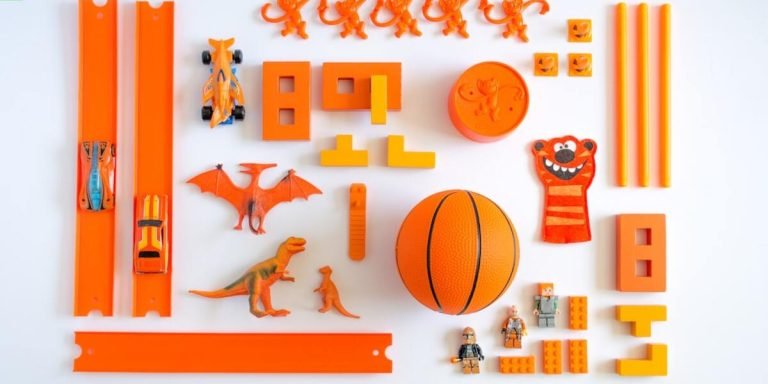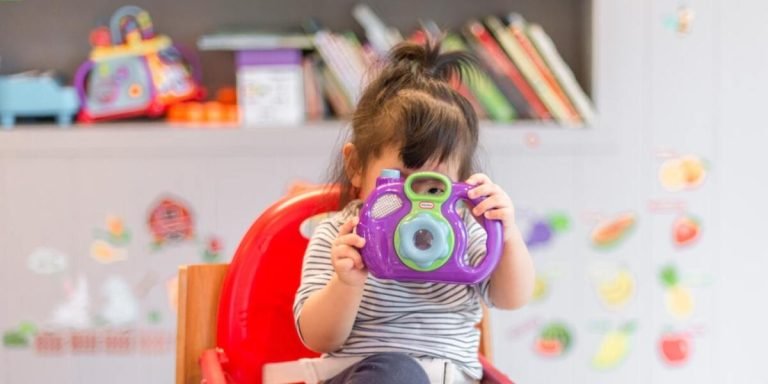Tactile Learner: Harnessing the Power of Touch in Early Education
Learning styles are numerous, and one that often tends to be overlooked is the style of a tactile learner. Tactile learning or kinesthetic learning means gaining knowledge through physical activities rather than sitting still in a lecture room. Understanding this type of engagement can offer positive implications for early education settings with young children who inherently learn by interacting directly with their environment.
Encouraging activity-based learning not only aids in retention but also promotes the involvement of multiple senses – especially touch. Incorporating more hands-on experiences into instruction allows learners to process new information using both cognitive and motor skills simultaneously, making the experience richly engaging on many levels while creating lasting impressions linked directly to real-world applications.
Did you know?
Did you know that nearly 5% to 12% of children are tactile learners, which means they learn best by physically touching or doing things? Harnessing this learning style in early education can boost their academic performance significantly.
Harnessing the Power of Experiential Learning for Tactile Learners
For tactile learners, the power of experiential learning cannot be understated. Experiential or activity-based learning is a hands-on approach that engages students by allowing them to directly interact with the material they’re studying. Rather than passive listening or reading, these learners are deeply involved in their education process through physical activities and real-world experiments which stimulate sensory touch points.
In today’s digital age where screen time dominates many children’s lives, integrating experiential learning has become even more critical for parents and educators alike as it offers an effective alternative to technology-driven teaching methods. Children who are identified as tactile learners often find this method quite interesting and quickly pick up on concepts because they get to use all five senses – sight, sound, smell, taste but more importantly touch – making it easier for them grasp information in ways traditional classroom instruction may not effectively reach.
Education researchers have continually pointed out how experiences play a key role in strengthening cognitive connections. For instance when tactile learner kids build geometric shapes using clay or draw diagrammatic representations of scientific concepts instead of merely visualizing from textbooks; such practical experiences could enhance comprehension skills like no other pedagogical technique can do so far. By harnessing the power of experiential learning we offer our young minds an opportunity to grow into well-rounded individuals without leaving any stone unturned.
Implementing Hands-On Strategies to Enhance Engagement
Incorporating hands-on strategies in the learning process is one of the most effective ways to engage tactile learners. In these interactive sessions, children can touch, feel and manipulate objects which significantly strengthens their understanding.
One approach involves creating real-world scenarios that pertain directly to what’s being taught. For instance, if you’re teaching a math lesson about shapes, have your child create different forms using clay instead of asking them merely to identify shapes on paper.
Another strategy could be field trips for subjects like social studies or science where they get direct contact with nature and society—visiting a museum or historical site brings history lessons vividly alive unlike reading from textbooks does.
Doing it yourself (DIY) projects also provide an excellent platform for experiential learning- whether it’s crafting an item after studying its benefits scientifically, such as making homemade slime while explaining polymers’ properties than just reciting facts.
Nature walks serve two purposes –it helps kids analyze living things first-hand plus lets them enjoy outdoor activities breaking up hours spent indoors studying alone.
Cooking possesses intrinsic mathematical principles regarding measuring quantities; hence cooking lessons are great practical applications conveying concepts creatively.
The Role of Sensory Workshops in Developing Practical Skills
In the world of childhood education, sensory workshops serve as a crucial component in fostering practical skills among tactile learners. These structured environments provide youngsters with hands-on experiences that bring abstract concepts to life.
Linking senses with learning forms the basis for experiential teaching methodologies. It’s an effective way to engage children who learn better by doing rather than observing or listening. This group of individuals is often referred to as ‘tactile learners.’ By implementing sensory workshops within their curriculum, educators can significantly enhance these students’ ability to connect theoretical knowledge with real-world applications.
Sensory workshops mainly involve activities designed around touch and feel sensations—making them perfect platforms for activity-based learning. The aim here isn’t just about delivering information; it’s creating memorable experiences tied up closely with key educational messages—a strategy proven successful in enhancing comprehension levels amongst tactile learners drastically.
Moreover, these sensory exercises stimulate creativity—an essential competency needed today and all throughout 2023—and equip children well enough even solve complex problems intelligently later in life!
By offering ample opportunities for exploration and experimentation right from early stages—the impact? A deeper engagement with academic material leads to improved overall performance at school level—not forgetting enriched cognitive development too!
The Benefits and Challenges of Activity-Based Learning for Kinesthetic Individuals
Activity-based learning is a powerful and impactful educational strategy that provides numerous benefits for tactile or kinesthetic learners. These individuals learn best by physically engaging with their environment, making hands-on activities an indispensable tool in their education journey. In our fast-paced digital era of 2023 where virtual classrooms are the norm, it’s crucial that we strive to keep this form of experiential learning alive.
One significant benefit derived from activity-based learning is how it aids in fostering children’s natural curiosity about the world around them. Through direct involvement and participation, students can explore various topics not only theoretically but practically as well. This also builds lasting knowledge because when experiences are memorable they encourage information retention more effectively than passive forms of teaching.
Albeit advantageous, there also exist challenges to implementing activity-based strategies within an education setting – notably resources allocation; be it time or material costs involved in creating interactive lessons plans which may deter some institutions from adopting such methodology fully into their curriculum regimen. However despite these hurdles, educators must remember: Kinesthetic learners thrive on active engagement so harnessing power potential behind experiential pedagogy should always remain paramount priority within academic landscape today.
Adapting Traditional Curriculum to Suit Tactile Learning Needs
Adapting traditional curriculum to cater to the tactile learner’s needs is no small feat—it requires innovation, creativity and a willingness for educators or parents to think outside the box. In 2023, with technology pushing boundaries in education like never before, this approach has become more significant.
Firstly, recognizing that every child learns differently is crucial. The traditional ‘chalk-and-talk’ method may not work for all students—especially kinesthetic learners who need movement and actions as an essential part of their learning process.
To better grab these children’s attention and enhance their comprehension levels during lessons or activities at home – it becomes imperative to incorporate physical exercises into routine teaching methods. A simple task such as drawing diagrams instead of merely reading from textbooks can make a world of difference!
Let’s also talk about games—one tool often associated with activity-based learning strategies—they are powerful ways through which theoretical concepts could be applied practically. Mathematics problems turn less intimidating when learned via hopscotch; spelling words seem easier while playing scrabble! This active engagement helps reinforce knowledge deeper within them than passive rote-learning approaches might achieve.
Taking experiments beyond science classes further broadens horizons—for instance, geography class where topographies get hands-on by creating clay models makes abstract concepts tangible! Similarly using real-world examples resonates well since they offer context-driven understanding promoting relatability—a win-win on multiple fronts!
Evaluating Outcomes: Success Stories from a Kinesthetic Perspective
Focusing on an experiential approach to education has led to numerous compelling success stories from a kinesthetic perspective. The tactile learner thrives when they can touch, explore and interact during the learning process.
One such example is Sam’s story. Sam was always identified as the child who couldn’t sit still in class, constantly fidgeting and struggling with concentration during traditional teaching sessions. However, his performance improved dramatically once he started activity-based learning methods at school that translated theoretical concepts into hands-on activities.
In one instance for example, where fractions were taught using pizza slices instead of numerical figures on a whiteboard – something clicked within Sam’s mind upon touching and manipulating these real-world objects which helped him gain deep insights about what fractional divisions meant.
A second account revolves around Lily who had difficulties understanding abstract ideas through textbook readings or lectures but flourished immensely with physical engagement added into her coursework. For Lily particularly fond memories revolved round studying geography: where teachers brought in elements like sand samples from different terrains (desert vs beach), thereby triggering sense-exploration whilst also capturing attention & curiosity leading towards knowledge retention ultimately boosting grades considerably.
Innovative Tools and Resources for Tactile Learner Inclusivity
In a bid to foster an inclusive learning environment, modern education professionals are consistently coming up with innovative tools and resources. These materials aim to address the diverse needs of learners, including those who excel in tactile or kinesthetic learning style. Tactile learners represent a significant part of our young scholars; their ability to grasp ideas better when they engage physically with educational material cannot be understated.
Experiential Learning has quickly become a popular approach among educators as it primarily focuses on hands-on experiences which is immensely beneficial for tactile learners. From interactive 3D models that can aid children in understanding complex geometry concepts to construction sets which teach basic physics rules – there’s no limit to what real-world objects and activities can do for these students’ comprehension levels.
Advances in technology have ushered us into an era where virtual reality (VR) and augmented reality (AR) play invaluable roles in classrooms worldwide. They specifically facilitate activity-based learning methods that include tactile learners. VR headsets enable students to view and interact with digitally-rendered environments as never before. Immersive digital technologies are revolutionizing teaching approaches and making learning fun for kids on their journey to becoming well-rounded individuals ready for the future.
Interactive Technology that Supports Physical Interaction
Embracing inclusive education demands a thoughtful chain of measures. Key among those is considering students with a unique learning style, like tactile learners. “Tactile learner” refers to individuals who learn more through physical activities instead of listening to lectures or watching demonstrations.
In today’s world that embraces digitized solutions for nearly everything, employing innovative interactive technology has become quite a game changer when it comes to fostering an environment conducive for tactile learners within the educational model.
Interactive tools and technologies are instrumental in transforming classrooms into dynamic areas encouraging active involvement from such young minds. This execution brings forth boundless opportunities not only restricted to reading and writing but also other sensory experiences capturing touch sensations that square with their distinct comprehension abilities.
One tool revolutionizing this form of experiential learning is Interactive Tabletops (IT). They transform traditional tables into multi-touch surfaces offering collaborative operations akin hand manipulations over conventional mobile devices albeit at larger scales appropriate for group work settings. Tactile/kinesthetic actions performed on these platforms translate readily onto corresponding digital symbols enhancing interaction between student-user and software-content while ensuring high user engagement rates amongst tactile learners.
Resource Kits and DIY Projects Tailored for Kinesthetic Intelligence
Teaching young children involves more than just preaching instructions from a textbook. For tactile learners, hands-on activities play an essential role in their education process. These experiential learning resources designed for kinesthetic intelligence can make the journey all the more enjoyable and enriching.
For instance some resource kits include shape puzzles to help tactile learners understand geometric concepts better or letter beads to enhance spelling comprehension through stringing together words physically rather than writing them down on paper.
DIY projects take nimbleness one step further by enabling students ‘to learn by doing.’ Whether it’s creating a solar system model with Styrofoam balls or constructing historical monuments out of clay; DIY assignments infuse creativity into traditional lessons fostering both cognitive development and motor skills improvement simultaneously.
In 2023 where technology has become ubiquitous even in classrooms – there is another set innovative tool coming up as digital sensory applications especially interactive games tailored specifically for this group of youngsters stimulating their pattern recognition ability alongside honing their problem-solving skills – perfect fusion between new age tech & timeless human senses!
- The rainfall cycle
- Sunlight intensity fluctuations
Conclusion
In the long run, recognising a tactile learner in your child or student can be an incredible advantage. It’s like having access to an entirely different language of learning that makes education more enjoyable and less strenuous for these touch-centered individuals. So now, it’s time you let those little hands explore their wonderful world of learnings.
We invite you to continue immersing yourself in our resource-rich website which provides invaluable support not only on understanding various childhood educational styles but also offers numerous tips & strategies for parents and educators alike navigating this exciting journey called “education”. Learn from experts today; remember every bit counts when it comes to shaping the minds of tomorrow!







